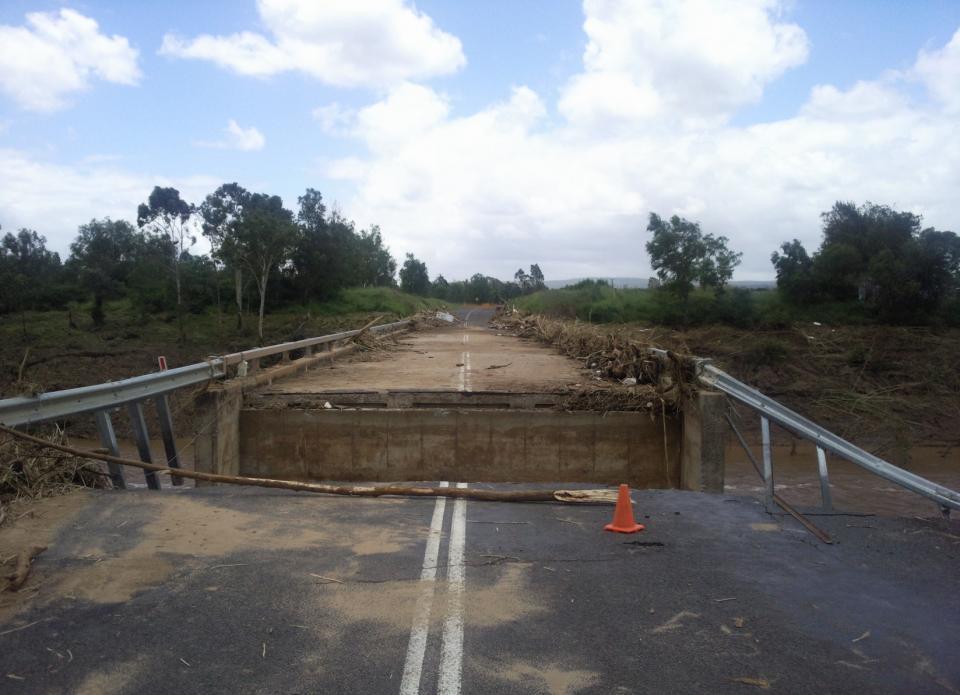
PUBLICATIONS
Published works

Damage modelling of reinforced concrete bridge piers under flood and log impact
| Title | Damage modelling of reinforced concrete bridge piers under flood and log impact |
| Publication Type | Thesis |
| Year of Publication | 2019 |
| Authors | Nasim, M |
| Degree | Doctor of Philosophy (PhD) |
| Date Published | 11/2019 |
| University | RMIT University |
| City | Melbourne |
| Keywords | Bridge, engineering, Flood, modelling |
| Abstract | Australia has suffered from the loss of life and extreme damage to infrastructure from natural hazards such as bushfire, flood etc. Floods are Australia¿s costliest disasters on bridges, one of the most important components of highway and railway transportation network. Therefore, safety and serviceability of bridges have always been a great concern to the practice and profession of civil engineering. The resilience of critical infrastructures such as roads and bridges is vital in evacuation support activities for during, before and after disaster response and recovery. In addition, bridges have a significant impact on the resilience of road infrastructure and the damage to bridges could significantly increase the vulnerability of the community served by the transportation infrastructure. Therefore, understanding the factors which affect the resilience of bridge structures, is extremely important to ensure the design specifications, as well as maintenance regimes for bridge structures. Furthermore, considering the resilience and vulnerability of structures is vital during, before and after disasters. Roads Corporation of Victoria (VicRoads) has identified that older structures consisting of U-slab decks are vulnerable to flood loading. The proposed project will focus on understanding damages to U-slab bridges exposed to flood loading. The vulnerable element of the case study U-slab bridges has been identified using a simplified analysis using Space-Gass. This analysis indicated that the superstructure of a U slab structure is quite robust under flood loading and slender piers can be vulnerable. Water flow pressure on the piers has been studied using Computational Fluid Dynamics (CDF) methodology to examine the pressure distribution on piers with two different cross-sectional shapes. This work has demonstrated that the pressure distribution on a bridge pier under flood loading can be simulated using a uniformly distributed load. Further, it is noted that the magnitude of the flood-induced force is significantly affected by the geometry of the pier cross-section. Considering the concrete plasticity damage (CPD) modelling, nonlinear analysis has been conducted to evaluate the damage behaviour of the piers, and a simple damage index based on energy absorbed, which can be derived from a standard finite element modelling output, has been introduced. Based on that different damage levels of a bridge pier under flood loading damage indices have been derived. Based on the review of practice and the literature review the log or moving object impact is likely to be occurring during flood loading. Therefore, a comprehensive investigation has been conducted to understand the structural response of a moving object impact, i.e., log impact. Using a validated model, the general relationship between different aspects of the structural response has been studied. Moreover, the bridge damage response during log impact has been studied, and the numerical results have been compared to provisions of different design standards. This study has concluded that the current provisions of design standards on the log or any moving object impact on bridges under flood loading could be unconservative and will require a systematic study considering the varying mass of impacts and the geometry of bridge piers. |
| URL | https://researchrepository.rmit.edu.au/discovery/fulldisplay?docid=alma9921892810901341&context=L&vid=61RMIT_INST:ResearchRepository&lang=en&search_scope=ResearchETD&adaptor=Local%20Search%20Engine&tab=Research&query=any,contains,Maryam%20Nasim&offset=0 |
Published Works

Key Topics
Project Reference
Publication Type
Thesis
Thesis
Publication Year
Year of Publication 2019

